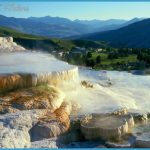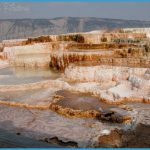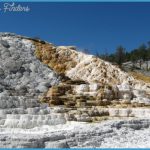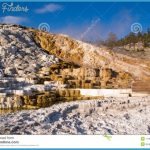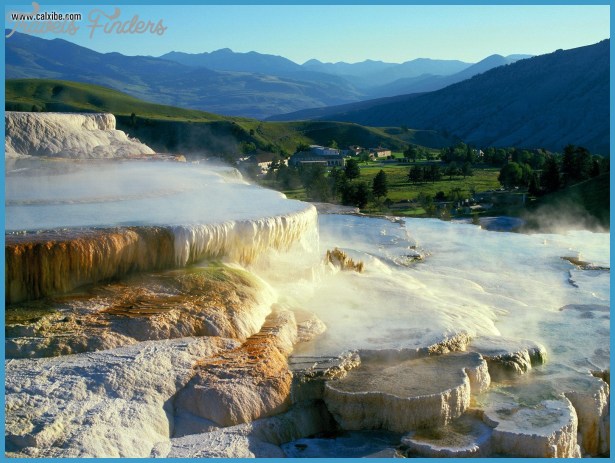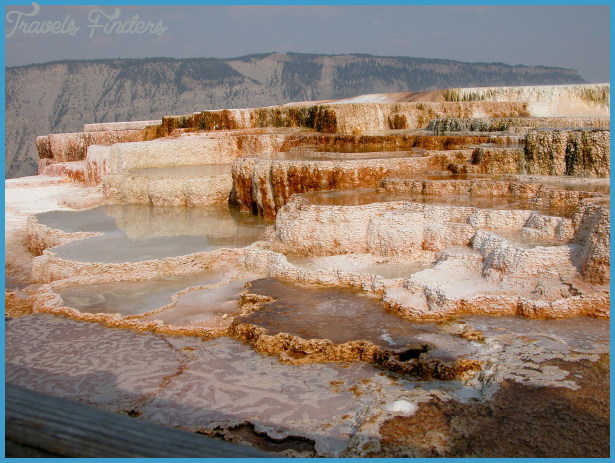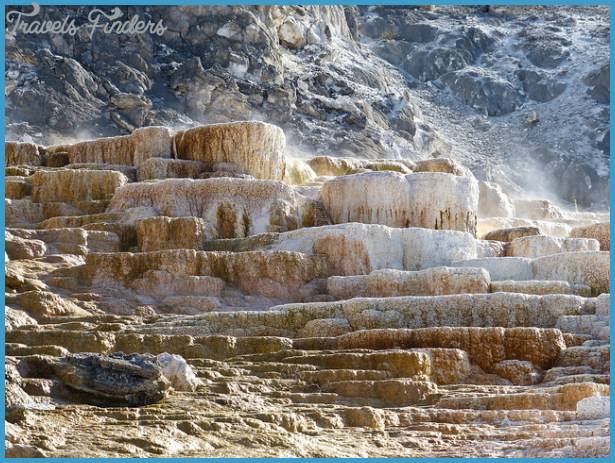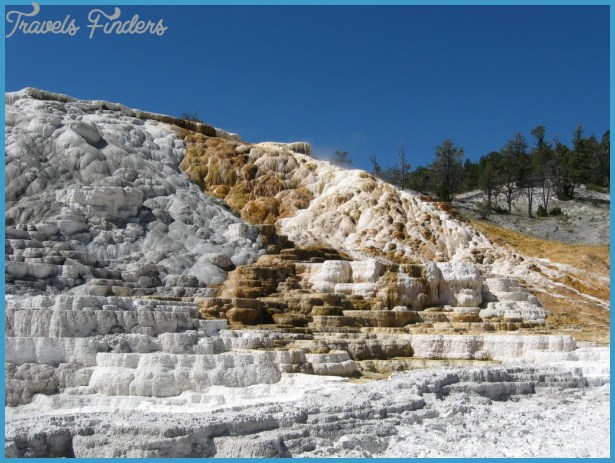active at least since 1871. The formation is estimated to be about 2500 years old. Travertine may have sealed the small orifice at the top or, when the cone reached a certain height, perhaps the water pressure was insucient to lift the hot water to the top. Another extinct cone to the left up the walkway is named Devil’s Thumb. Not long ago a small boy commented as he passed, Devil’s Big Toe would be a better name! Adjacent to Devil’s Thumb is Palette Spring. Active in recent years, this colorful spring was so vigorously active in 2006 that part of the boardwalk had to be removed. Perhaps it will engulf Devil’s Thumb in a decade or less. The walkway continues steeply uphill, past much-eroded Hymen Terrace (named for the Greek god of marriage) below on the north (right). Dormant since 1936, the upper section of this terrace is now almost unrecognizable as a terrace. The Haynes Guide for 1912 stated prophetically: Hymen Terrace is growing fast; in fact, it is gravely feared that the openings may become choked from the abundance of depositing lime.
If this should happen, it would be a matter of but a few days until the coloring would have disappeared, leaving the travertine rock bare and exposed to the destructive forces of the elements. trail forks, you will pass next to Minerva Terrace, named for the Roman goddess of wisdom and the arts. A short spur of boardwalk dead-ends at a part of Minerva that was very active and beautiful for most of the 1990s but sometimes inactive from late 1998 on. The boardwalk has to be changed whenever and wherever the terrace builds up too high. At Mammoth’s springs, particularly at Minerva ed Roman slaves, later worn during the French Revolution, and then depicted on early American coins. In 1874, the visiting British Earl of Dunraven looked at this formation and wrote: Professor Hayden calls this the Liberty Cap; locally it goes by another name. The spring that built Liberty Cap has been inSpring, enterprising early residents sold coated specimens to the tourists. Any item kept in this water was nicely coated in about 4 days or completely buried by calcium carbonate deposits in 11 days. A Mountain Turning Itself Inside Out In only 130 years of recorded history, Mammoth’s terraces have grown tremendously in height and width. In fact, the average buildup of travertine in active areas is about 8 inches (20 cm) per year and can be as much as 2 feet (60 cm) in a year.

